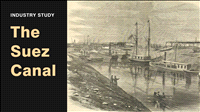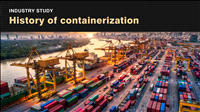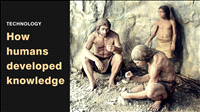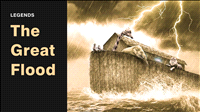A world without electricity | What if the world stops producing electricity | Economy
By Kiron Kasbekar | 03 Mar 2023
I am Kiron Kasbekar, and the video I’ve created for you today is the grim future scenario of a world in which various causes have combined to result in a widespread disruption of power supply.
It reminds me of the line by Yogi Berra, the famous American baseball player – ‘The future ain’t what it used to be’!
Future? Used to be? But that’s Yogi Berra. He kept coming up with interesting stuff like that.
That line – ‘The future ain’t what it used to be’! – is loaded with meaning. How I am interpreting it here is this: for several decades after the end of the Second World War, life seemed to be improving year after year. At least for a part of the world – the Western world. That image of the future is beginning to crumble. And the cause of the crisis we are headed towards is the reckless industrialization, exploitation of the earth’s resources, and spending sprees of the post-Second World War period.
Most of us would have experienced power shutdowns at least once in our lifetimes. Some of us, many, many times. Yet, in the past, there was always the assurance that things would return to normal in a day, in a week, perhaps a bit more.
But no power for much longer, and we’d become desperate. The food in refrigerators would rot, the electric gadgets in the kitchen would not work. Nor would telephone land lines or mobile phones.
Offices and factories in the affected areas would be as affected as homes. So people would be rendered idle. Foodstuffs in supermarkets would begin to rot. Traffic would crawl to a halt because the petrol stations would not have electricity to pump petrol into buses, trucks, cars and two-wheelers. If you own a bicycle, you will be one of the lucky ones. If you own a bullock cart, even better!
Have you ever imagined a world without electricity? What would happen if, one day, all the power plants in the world suddenly shut down?
In this video, we will explore the effects of a world without electricity. We will discuss whether it is possible for all electricity production plants in the world to shut down and why they might shut down. We will also explore the impact of a world without electricity on human life, and which machines can still work without electricity.
Now, remember, the world didn’t even know about electricity before a century and a half ago. And, even in the most advanced countries of the world, electricity began to be used in homes only towards the end of the 19th century. Its use in those countries grew rapidly in the beginning of the 20th century, and continued until around 1950.
But many developing countries still do not have electricity in rural areas.
So our great-great grandparents and great grandparents knew what it was to live without electricity. I remember, in my childhood days in Mumbai, street lamps were gas-lit. Municipal workers would arrive dutifully every evening with long hooked poles with which they lit the gas in a glass-encased lamp. And in the morning they would return with the poles to extinguish the flame. I am talking about the 1950s. Barely seventy years ago.
A little earlier, before the Second World War, not everyone in Bombay had electricity in their homes. They had to make do with kerosene lamps.
And that was about lighting. Electric fans were rare. So, in the hot summers, you would see people cooling themselves with fans made of cardboard, cloth or dried leaves. You’d see many people in thin vests drenched with perspiration. But life went on.
That is something today’s middle class youth will not even be able to imagine, although there are millions of poor working people in the country who still do not have the benefit of electric fans, and have to sweat it out all day. Literally.
I was tempted to create a video entitled, ‘What if we do not have any electricity?’ Sometimes it’s useful to create various scenarios so we can plan for different eventualities.
For one, hydroelectric power is always available.
Or is it?
Think of a situation in which, because of global warming, the ice caps on the mountains have melted completely, or nearly completely, so the mountains do not have snow left to melt in summer to feed the rivers, as they do now. The snow-fed rivers will dry up.
Rain-fed rivers will, of course, continue to run, unless rain patterns change dramatically. But there is yet another factor we need to consider.
Dams have burst and the waters released have destroyed life and property on a large scale. Hydro-electric power projects have also been cited as the cause of some disasters because of the tectonic impact they cause in the form of earthquakes. So I am not sure how much we can rely on hydroelectric power.
There will be another major crisis, a rise in sea levels, which will be disastrous for coastal cities around the world and low-lying countries, such as Bangladesh, not to speak of many island countries in the Pacific and elsewhere.
Then there is nuclear power. While fears of nuclear accidents, and the diversion of nuclear fuel to military uses, resulted in brakes being applied to expansion of nuclear power, there is growing support for the use of nuclear power as a source of clean energy.
Some countries, France, for example, depend heavily on nuclear power for their energy needs. In 2021 as much as 69 per cent of France’s energy supply came from nuclear power. The US gets 19 per cent of its energy from nuclear power. But globally nuclear power accounts for barely 10.5 per cent of total electricity generation.
In Japan, on 11 March 2011, there was an accident in the Fukushima Daiichi Nuclear Power Plant, operated by the Tokyo Electric Power Company. After that Japan, which got 30 per cent of its power from nuclear power, suspended the operations of 46 of its 50 nuclear power plants. Its plans to expand nuclear capacity to reach 40 per cent of total power capacity, was scrapped. And in 2021, nuclear power accounted for just 7 per cent of the country’s electricity generation.
Still, it seems the world is now going to depend more on nuclear power in the future. More on that in another video.
We have seen how earthquakes, thunderstorms, tsunamis and riverine floods have completed disrupted life in countries as varied as Sri Lanka and the United States of America. Low-lying areas like Florida, Bangladesh, and the province of Sindh in Pakistan are especially vulnerable. Turkey and Syria have still not fully recovered from the earthquake that disrupted their economies on 6 February 2023 and killed more than 52,800 people.
The earthquakes are estimated to have caused US$84.1 billion in damage. And the damage caused to roads, followed by winter storms and disruption of communications hampered the Turkish national disaster agency AFAD's rescue and relief effort.
Turkey deployed a 60,000-strong search-and-rescue force, 5,000 health workers and 30,000 volunteers to aid and assist the affected people. After an SOS from Turkey, more than 141,000 people from 94 countries joined the rescue effort.
It was an absolutely horrendous situation.
Now imagine just such a situation multiplied by five or ten or twenty. Imagine disasters like floods and earthquakes hammering several areas in several countries simultaneously.
How will the world cope with rescue operations and the vital relocation and rehabilitation of affected people?
How much longer will it take to restore the infrastructure and essential services like electricity, clean water, and food, besides the medical aid that would be required on a large scale?
Now you might argue that it is unlikely that all power plants in the world will shut down simultaneously. And you would be right.
But what would happen if there are disruptions in many places simultaneously? Would we have grid failures? Failures where sudden breakdown of several power plants in a regional or national grid cause failures across the entire grid? Might terrorists take advantage of the confusion to launch cyber-attacks on power grids?
Supply chain disruptions (such as a break in the supply of coal, or damage to transmission towers) could also result in disruption of the working of power plants and grids.
The impact on the world of a host of these disasters happening simultaneously could be huge. I have not even tried to make an estimate of the financial cost. Because I have no idea how massive the disruption could be.
But if I cannot do such calculations, doesn’t mean that governments and international agencies should not attempt to make estimates of what the costs might be. They need to work with different scenarios, beginning with a small number of severe disruptions going on to major simultaneous dislocations across several regions.
How would even industries and organizations in regions untouched by the disasters be affected? In our inter-dependent world, companies are connected to one another through complex supply chain networks. If a few parts of that supply chain are destroyed or rendered dysfunctional even for a longish period of time, many other parts that are either suppliers or buyers would be hit very hard.
And that would have cascading effects on a wide range of other industries, on employment and even the law and order situation
The electricity crisis would hit nearly everything across a wide region around the disaster area. Electricity powers almost everything in our modern world, from homes and businesses to hospitals and transportation. Without electricity, communication systems, including the internet and cell phone networks, would be disrupted.
Many people would be unable to work, and the global economy would suffer. Medical facilities would struggle to operate without power, and access to clean water and food would be severely limited.
So I wonder whether we need to reverse the trend we have seen in the past century.
What trend? The trend of centralization. Perhaps we need to create a system where small regions – such as districts – can aim to become self-sufficient in basic provisioning and services such as healthcare. Here I mean self-sufficient in the sense that if areas surrounding a district do not have power or transport, the district would still manage to deal with the disruption while the affected areas are assisted by central or international agencies to return to normal.
It’s possible that I am exaggerating the dangers. I don’t know. But I do know that the environment is becoming increasingly difficult. We humans have only ourselves to blame for this desperate situation in which we have landed ourselves. But we need to prepare to deal with the crises which we are sure to run into in the not-so-distant future.
If we plan in advance, we will be able to better deal with the impending crises. It is beginning to look as if it is now too late for us to prevent an environmental crisis. But we can prepare ourselves better to cope with it.
And who knows? If we act quickly and decisively, and together as one humanity undivided by hatred politics, militarization and wars, on which we spend an unacceptable amount of funds, we may well be able to stave off the crisis.
Ironically, if and when the world finds itself in a situation in which there is no petroleum left, and electricity too has to be rationed out, or market forces leave a large part of the population unable to afford the use of electricity, at least all day, it is those who are deprived of electricity who will be the least bothered about what for everyone else will be a major calamity. Why? Because they don’t use much electricity anyway.
If you ever think such a thing, dismiss the ideal immediately. The people who have no electricity today are still dependent on the rest of society for their own sustenance. If everything around them collapses, they will have even less of a chance to survive than others do.
Even people who can well afford to buy things, will have to say goodbye to many things they have come to see as necessities of life.
For example: lights, fans, TVs, iPods, music systems, kitchen appliances, microwaves, refrigerators, freezers, air-conditioning, heating, landline phones, mobile phones, Internet, computers, washing machines … and lots of other things.
Outside the home, a host of things won’t work. Cars, buses, motorcycles, trains, and planes – and the fuel pumps they need to use – all rely on electricity for refuelling.
So we will be back to bicycles, and other human-powered transportation. In addition, animals such as horses, donkeys, and camels will come back in a major way.
The only people who will remain relatively unaffected will be people who work on their own farms, grow their own food, have access to enough water from a local river or lake, and can survive without dealing with people in the cities.
What about others? Will they be able to go back to manual tools and gadgets that people used in the past, and remain content with that? A whole host of things would come back into the market. For example:
• Bicycles, cycle-rickshaws
• Coal-fired stoves
• Manual juicers
• Hand pumps
• Handcarts, bullock carts
• Handlooms
• Manual tools – hammers, drills, etc.
• Pulleys
• Sewing machines
There would be a long list of things like that.
I am still to wrap my head around this idea, and am still wondering what the details of such a scenario might be. I hope I can find some more information and analysis on the subject so I can throw more light on it in another video.




























